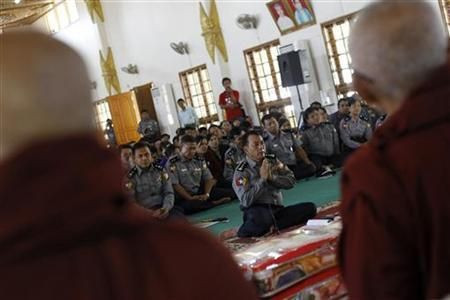Myanmar Admits Phosphorous Usage In Mine Protest Crackdown

A parliamentary report in Myanmar released Monday acknowledged that police used smoke bombs that contained phosphorus during a crackdown on a protest against a Chinese-backed mine last year leaving 108 people with serious burn injuries.
The incident in November at the Letpadaung copper mine in Monywa in northwestern Myanmar was the biggest use of police force against protesters in the country since President Thein Sein’s semi-civilian government took charge in March 2011.
The investigation commission was appointed by Thein Sein and chaired by opposition leader Aung San Suu Kyi.
Police had earlier claimed they only used tear gas and water cannon against protesters, many of them monks, to end the 11-day occupation of the mine.
Myanmar's government apologized for injuries in December and said police regretted the incident.
In late-January, a group of lawyers investigating the incident had said that the police used white phosphorus, a munition usually reserved for warfare, to disperse protesters.
An independent investigation was carried out by Burmese lawyers and an American human rights lawyer, studying material gathered at the site of the protest. Tests conducted at a private laboratory in Bangkok, found that the residue inside a metal canister said to be fired by the police contained high levels of white phosphorous.
The parliamentary report did not specifically mention white phosphorus, saying only that smoke bombs containing phosphorous were used, the BBC reported.
“We have found that unexpected and unnecessary burns were caused to some monks and civilians because the police used smoke bombs without knowing what their effect would be,” the report said.
White phosphorus, the legality of the use of which constitutes a gray area during military conflicts under the Chemical Weapons Convention, is rarely ever used by police forces against civilians.
White phosphorus can cause severe chemical burns, and the smoke vapors can cause illness or prove lethal in certain cases. The residue can poison food stocks or water sources and lead to slow poisoning.
The protests, over alleged unfair seizure of land from the residents for the mine, jointly owned by a Chinese company and Myanmar Economic Holdings, owned by the Burmese military, saw the participation of hundreds of local villagers, backed by activists and Buddhist monks.
© Copyright IBTimes 2024. All rights reserved.












